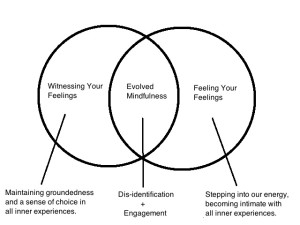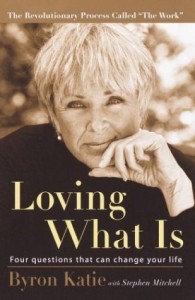After doing so much meditation, I came to a place where I was highly proficient at “witnessing” my inner reality. I could recognize even the subtlest emotions the moment they began—I knew how they felt energetically in the body, their associated thoughts and, often, the underlying reasons they arose.
Seeing all that in real-time was a tremendous way to demystify the ego. I didn’t really get phased by much. Good or bad. I was solidly in the middle. I lived my life in a place of enormous spaciousness.
And yet, something seemed a little off.
I spoke with a teacher who pointed out that while my strong awareness was definitely the right path, she saw in my eyes a hint of weariness, and suggested maybe I wasn’t channeling it the right way. She gazed at me longingly and said there are two basic directions for awareness:
The first, dis-identification, she said is a high spiritual quality full of centeredness and aliveness. A dis-identified person welcomes whatever experiences or emotions come, but also has enough inner strength to not get entangled or carried away. No matter what’s happening, they remain rooted in their deeper identity and their innate human desire to love and serve.
The second, dis-engagement, she said is a form of aversion that, while spacious and grounded, is devoid of life-force. A dis-engaged person doesn’t want to deal with certain things, and their inner strength can be used to avoid, even subconsciously, truly experiencing certain places inside themselves. It leaves a person feeling like something is a little off.
The bridge, she told me, was to palpably feel my feelings.
………..

Continue reading →





 A friend and I were in Myanmar, sitting in the bus station lobby, ready for our 12 hour trip to Bagan.
A friend and I were in Myanmar, sitting in the bus station lobby, ready for our 12 hour trip to Bagan.
